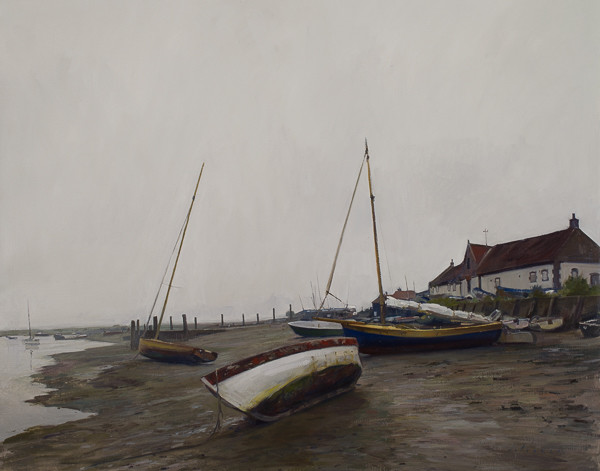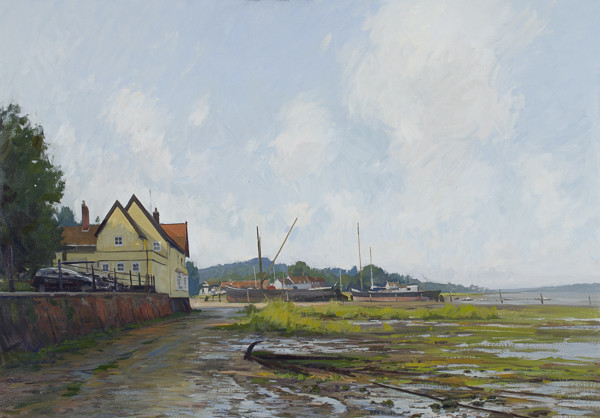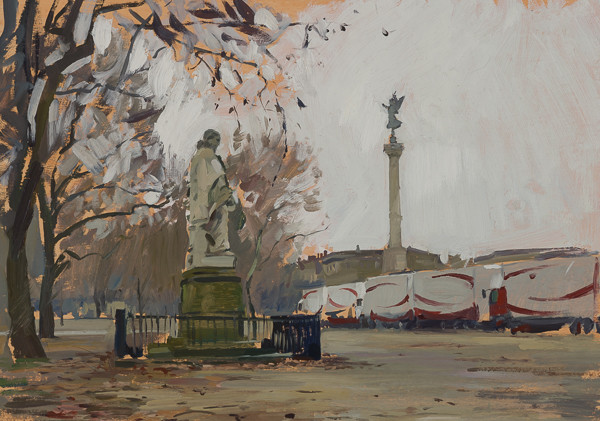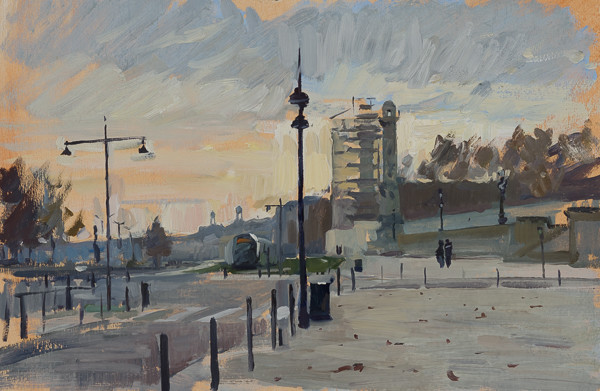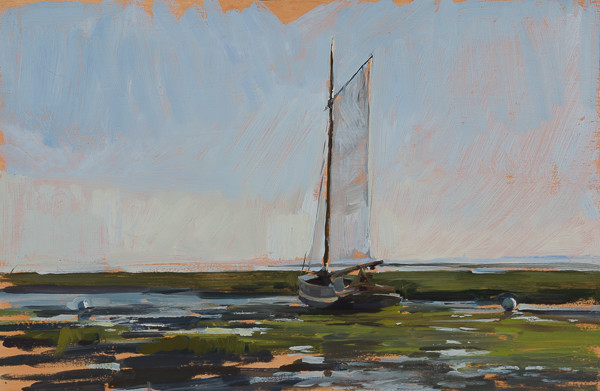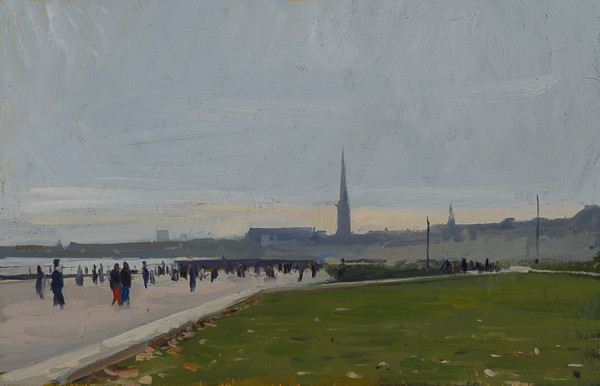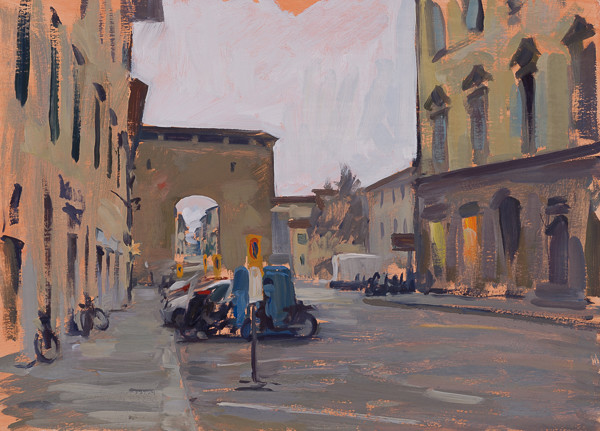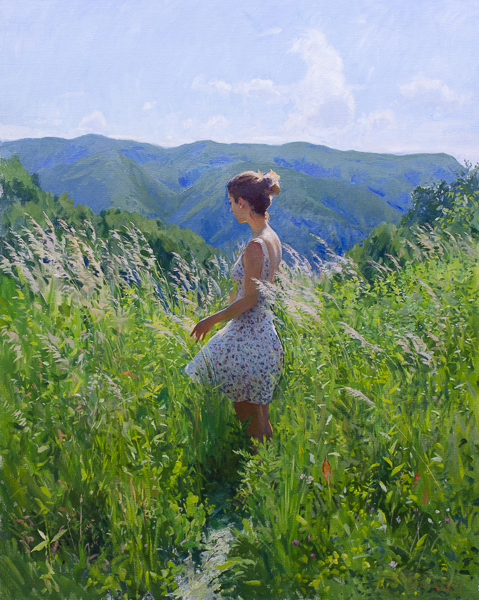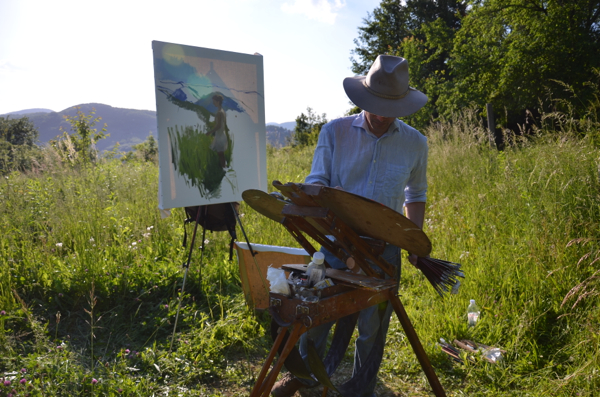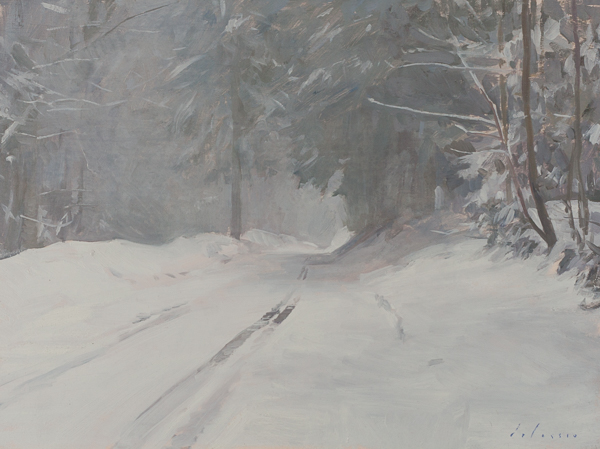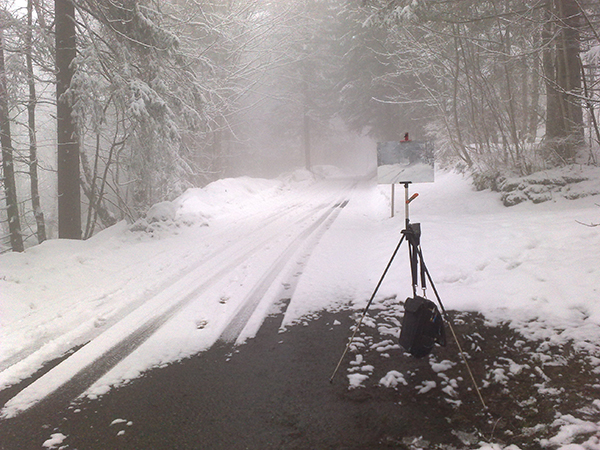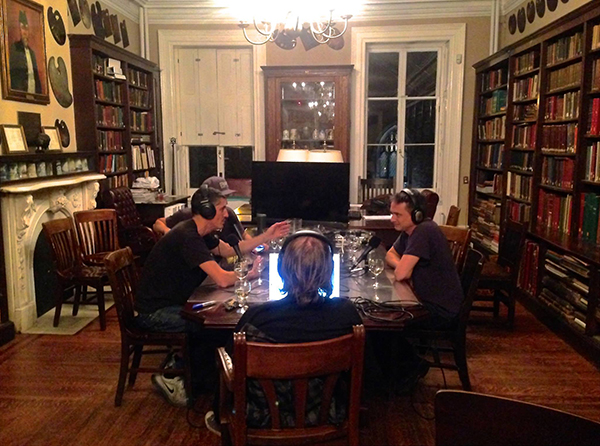Traditional media tends to ignore contemporary traditional painting. When I was first starting out as an artist I found this really frustrating. I was searching for art training which did, as it turns out, exist but it was there was no mention of it anywhere. Today the internet and social media have really changed things for the better. There are a lot of great traditional painters working and we now have a myriad of ways to see the work of these artists, as well as network, sell paintings, and discuss issues relevant to realism with painters from all around the world.

Pinterest is my favorite online resource for art. Google Images and Bing are both stunningly awful for any generic art search, and even refined searches quickly descend into irrelevance. Looking for 19th-century Italian artists, for example, starts to turn up soccer players and starlets very quickly. When you first go to Pinterest, all the images are of clothes and furniture. The trick is to set up an account, unfollow all the boards they start you with, and begin looking for painters you like. From there you pick boards you like via the ‘this painting is also on this board’ link, and follow them down the rabbit hole of great artwork. The way I have it set up now gives me a large number of inspiring artwork to peruse, and it’s usually a wonderful mix of historical and contemporary artists. It’s also great for finding a very specific genre of work, as generally the people curating their boards do a good job with it. I don’t post work much myself, but my profile is here.
ArtStack is similar to Pinterest, but focused on art. I’m new to it, and the art is mostly Contemporary with a big C. The layout is very elegant and clearly made by people who understand looking at artwork (they even convert from centimeters to inches for you, and list both). Currently they are having a crowd-source art contest which I’ve entered, and if you have a free moment you can ‘stack’ my work here.
Wahoo Art, on the other hand, has to be one of the least elegant sites on the web. They make up for it with a ridiculous amount of work on display by historic artists. Here are the results for a search of Isaac Levitan’s paintings, for example. My wife actually just showed me that link yesterday and many of those works I had never seen before, despite having seen a large number of his monographs.
Other online catalogs for paintings that I sometimes use are the ARC Museum, Wikiart, and Olga’s Gallery.
Facebook is the social media platform where there seems to be the most activity for artists. I’m personally very thankful to the site for getting me in touch with old friends I wouldn’t have found again otherwise. For painters there are some good groups worth joining to see historic as well as contemporary realists, and participate in some interesting discussions. I find it is also an excellent way to get in touch with painters around the world before I travel there to paint. Having a local artist show you around is the best way to work. Unfortunately Facebook has a limit of 5000 ‘friends’, but you can follow me here. I only post painting-related things these days, and it’s always set to public.
All the cool painters use Instagram these days. I really dislike everything about it. I rarely use my cellphone, and if I’m looking at paintings I prefer a big, color-calibrated screen. It’s also really snooty about what phone you use and my old Nokia didn’t make their cut. After recently inheriting an Iphone I’ve started using Instagram more, though I find the quality of photo that can be taken with any phone to still be seriously lacking. Photographers sometimes use Dropbox to get their high-quality photos onto their phone and then upload to Instagram from there, so I’m trying that. Another clever social media trick is to use IFTTT to automate your posting with ‘recipes’: This one, for example, posts anything that goes on Instagram to Facebook, this one does the same to Tumblr, and this one posts it as a native Twitter image. So, after that rant, you can follow me on Instagram.
Twitter I find to be very useful for specific things. When I was setting up this blog I started following all the ‘how to start a blog’ twitterers and found tons of useful links and information. If I need to find art materials in a new city I can just tweet to the company that makes them and they’re usually good at responding. I know of other artists who use it to great effect for finding clients, commissions, etc. and it clearly can be a powerful tool for those that understand how to use it. On that note, here is my (rather uneventful) twitter.
The online world has also opened up access to new markets for painters. I personally still do most of my sales through brick and mortar galleries, but I’m a big fan of the Painting a Day movement. It was originally pioneered by artists such as Julian Merrow-Smith, and has now been taken up by lots of great still-life and plein air painters. The premise is simple: Have a blog, paint every day, and sell the works one by one as they’re finished. I think it’s great that so many artists around the world have used the internet to find a new way of making the daily act of painting interesting, and that so many clients are able acquire beautiful, original works of art at the same time.
There are some good forums for artists, though nothing really stands out since RationalPainting went full Munsell (edit: I was informed that Rational Painting is no longer Munsell-only, it was just for a brief period after they changed servers). Natural Pigments has a good materials forum, Wetcanvas is very active with every style and technique, and ConceptArt has a good fine art section, among its various offerings.
The only podcast I know of for painters is the Suggested Donation Podcast (I was interviewed for it in November).
The most comprehensive list of painting schools is the ARC Approved Atelier List.
And finally, the online media on art I subscribe to are Plein Air Magazine (it’s a real magazine, but I read it online), The Artist’s Road, Artists on Art, and Underpaintings. Stapleton Kearns, Painting Perceptions, Lines and Colors, The Hidden Place, and Fine Art Views are some of the free blogs I peruse when I’m not arguing on reddit.
Edit: As Maike mentioned in the comments, I use my Flickr account to host large images of all my paintings. I do this since Lightroom has an easy upload system for Flickr (for some reason, there isn’t a similarly functional way to upload into Adobe’s own image-sharing website Behance). I didn’t list it as social media simply as I don’t use it as such. The one thing I did do for a while, which I’ve discussed before, is to use geotagged photos from my phone to keep a database on Flickr of some of the places I’ve painted so others can use them. For more ideas of locations, Paintmap does the same thing but with artists from all over the world.
If anyone has any suggestions to add, please list the in the comments.
